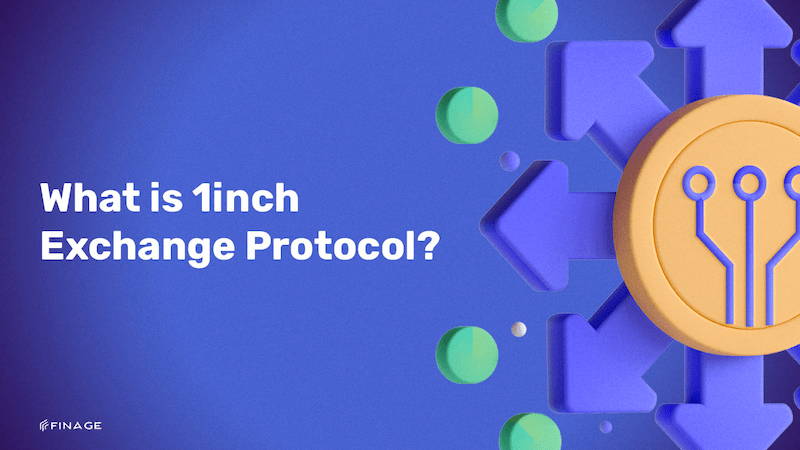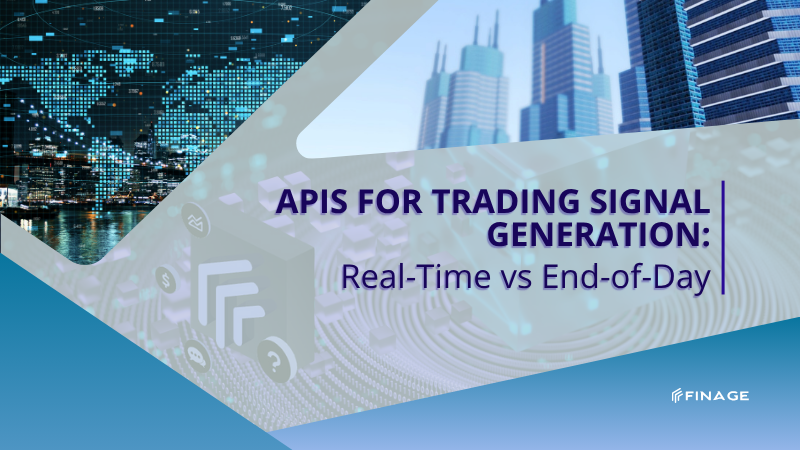What is 1inch Exchange Protocol?
6 min read • February 6, 2023

Introduction
The 1inch platform is powered by its 1INCH utility and governance token, which it uses to search multiple decentralized exchanges for the best prices on cryptocurrencies for traders. Staking 1INCH tokens generates liquidity and is used to furnish the platform's decentralized "instant governance" model.
Table of Contents
- 1Inch Exchange Protocol Advantages
- What Causes the Shortage of Liquidity in Decentralized Markets
- Improving Liquidity to Decrease Slippage
- Final Thoughts
1Inch Exchange Protocol Advantages
Traders can use 1inch, a cryptocurrency price aggregator, to find the best deals across all of the major decentralized exchanges (DEXs). Intermediate knowledge of financial markets, especially cryptocurrency, is required to appreciate 1inch for what it's worth. For tokens to be traded between users in the digital asset ecosystem, secondary markets, also known as exchanges, are essential. Both centralized and decentralized exchanges exist for trading cryptocurrencies.
CEXs are centralized cryptocurrency markets that use order books to facilitate transactions between buyers and sellers. These sites act as custodians, holding your cryptocurrency in a wallet managed by the exchange, much like traditional stock trading sites. Decentralized exchanges, on the other hand, use non-custodial infrastructure and self-executing smart contracts to match and execute transactions between buyers and sellers.
Despite the benefits of increased safety and independence, slippage can occur on DEXs due to inefficient asset pricing. This is the difference between the market price and the executed price of a trade. To increase the depth of liquidity pools, DEX aggregators like 1inch search multiple DEXs for the best available price to complete a trade. The effect of 1inch on liquidity can be better understood if we dissect the structural differences between centralized and decentralized exchanges.
What Causes the Shortage of Liquidity in Decentralized Markets
All cryptocurrency trading can take place in one centralized marketplace. Users can benefit from this infrastructure because it provides them with access to more potential business partners. More participants in the market mean more opportunities to enter (buy) or exit (sell) at prices that suit traders' needs. Because of this, their investments are more liquid. Traders who have access to large amounts of liquid assets are in a better position to react quickly and effectively to market fluctuations. In a nutshell, an increase in liquidity safeguards against the destabilizing effects of the market and makes money more easily transferable.
Different strategies are employed by decentralized exchange protocols to ensure liquidity in the absence of a central custodian. Many DEX platforms rely on automated market makers (AMMs) to facilitate transactions through liquidity pools in a place of order books and matching engines. The terms of each trade in these pools are established by means of computer-generated contracts. Because of the on-chain nature of these exchanges, however, gas costs can fluctuate. Gas prices spike during periods of heavy network traffic, which discourages trading and reduces liquidity.
Moreover, the volume of trades required to match the depth of liquidity on traditional exchanges is too high for many blockchain networks to handle. Binance Chain and Solana, two decentralized exchanges, use atomic swaps to avoid Ethereum's high gas fees, but they don't support ERC-20 tokens, which is a problem because the vast majority of cryptocurrencies in circulation today adhere to this standard. All of these problems with centralized exchanges make decentralized protocols like the 1inch DEX aggregator all the more important.
Improving Liquidity to Decrease Slippage: The Role of the 1inch Exchange
As a result of low trading volume, slippage can occur when an asset is bought for more than expected or sold for less than expected. In order to reduce order slippage, the 1inch DEX protocol pools liquidity from multiple DEXs.
Let's pretend a large investor wanted to purchase bitcoin at a price of $50,000 per coin (BTC), so we'll use that as an example here. Although the buy order has been released to the open market, there are only 500 BTC available on this particular decentralized exchange. Therefore, the next sell order at $50,500/BTC is executed. To put it another way, the buyer overpaid by $250,000 (or $500 per BTC multiplied by 500 BTC). Slippage, to put it plainly. The 1inch protocol aids in avoiding this situation by combining trading activity across multiple platforms, which pools liquidity and reduces market inefficiencies like slippage.
As of the second version of 1inch's protocol's release in November 2020, swaps could be made on 21 different decentralized markets. The protocol not only decreases the likelihood of slippage on individual trades, but it also indirectly reduces price volatility across the entire DEX ecosystem by increasing market liquidity.
The 1inch Liquidity Protocol is an AMM that makes use of virtual balances to reduce temporary loss, further bolstering the 1inch crypto token ecosystem's liquidity. Trading assets such as ETH to a designated pool, locking it in and earning 1INCH, the native token of 1inch, is an example of "liquidity mining" on the 1inch DEX platform, in which users provide tokens as liquidity and benefit from the process. A native DEX token, such as Uniswap's UNI, incentivizes community-based liquidity provision in a manner analogous to this model.
The 1INCH token is essential to 1inch governance and provides access to the 1inch AMM Liquidity protocol. Users of the 1INCH exchange platform were given the 1INCH token on Christmas Day, 2020, in the form of a governance token. All holders of 1INCH tokens, which serve as governance tokens, have one vote each in the network's decentralized governance system. Since tokens were promised to platform users before the token launch, the distribution occurred retroactively.
The ninety million 1INCH tokens were distributed to those who met the following requirements
- Persons who have engaged in at least one trade by September 15, 2020 or a minimum of four separate trades; or a combination of any number of transactions that adds up to twenty dollars.
- Six percent of all 1INCH tokens (or 900 million) were given away in the first airdrop. In order to finance staff growth, audits, grants, and insurance against possible hacks, 14.5% of the remaining 1INCH token supply will be released over the course of four years. The 1inch Liquidity Protocol and other community incentives will be funded with another 23% of 1INCH tokens.
- The Chi Gastoken is a utility token within the 1inch token ecosystem that can be used to cover transaction fees. Tokenizing the cost of gas on Ethereum, the Chi Gastoken is an ERC-20 token that can be exchanged for other cryptocurrencies. To encourage its use, transaction fees are reduced for those who use it.
- With a 1 inch exchange, instant rulemaking is possible. The 1INCH token is a form of participation and voting on the 1inch DEX platform's governing decentralized autonomous organization (DAO). The 1inch exchange uses a governance model known as "instant governance," in contrast to the more common DAOs in the cryptocurrency industry and in DeFi specifically. Token holders can make protocol updates more quickly and easily thanks to this proprietary model.
- The 1inch Foundation claims that with instant governance, token holders can feel more invested in the platform because everyone can have a voice in the decision-making process, every vote counts, and no token holders are given special treatment. This model is in contrast to the DAO used by the Dash platform, in which Masternodes have supervoting power.
- 1inch stands out in the increasingly sprawling DeFi ecosystem by serving as a single point of entry for numerous decentralized exchanges and tokens. One inch is well on its way to unleashing a flood of liquidity into the decentralized finance (DeFi) ecosystem by pooling the liquidity of the broader DeFi sector and providing a native source of liquidity via its AMM.
Final Thoughts
We hope that this blog post will be beneficial for you. We will continue to create useful works in order to get inspired by everyone. We are sure that we will achieve splendid things altogether. Keep on following Finage for the best and more.
You can get your Real-Time and Historical Cryptocurrency Data with Finage free Crypto Data API key.
Build with us today!
Claim Your Free API Key Today
Access stock, forex and crypto market data with a free API key—no credit card required.

Stay Informed, Stay Ahead
Finage Blog: Data-Driven Insights & Ideas
Discover company news, announcements, updates, guides and more


